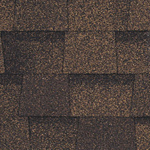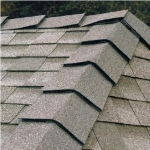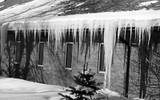
Frequently Asked Questions
Insurance Terminology & Procedures
Replacement Cost
Although you may have a “Value” or “RCV” policy on your home, the RCV coverage typically only applies if the repairs/or the replacement has been completed. Typically your initial payment is based on “Actual Cash Value or ACV” of the damages. Below are questions that will explain what depreciation is and how the depreciated amount is released by the insurance company.
What is replacement cost (RCV)?
Replacement cost is the actual cost that you incurred for the repairs or replacement of the damaged items with like quality and kind, without any deduction for depreciation.
What is actual cash value (ACV)?
Actual cash value is based cost to repairs or replacement of the damaged items with like quality and kind, less depreciation.
How is deprecation calculated?
Deprecation is calculated based on the life expectance of the item, with the possibility there will be adjustments for age and condition. Insurance companies work of deprecation tables. Similar deprecation tables can be found on line. Every item that is in your home or part of your home can be found in a deprecation table. For example: Let’s assume that the normal life expectancy of the roofing material is 20 years. Under normal conditions the roof depreciates at a rate of 5 percent per year If the roof is 8 years ago with typical wear and tear, the depreciated amount is 40 percent. ( 5 percent x 8 years = 40 percent.) The actual cash value (ACV) of the roof is 60 percent of the replacement cost. ( 100 percent – 40 percent =60 percent)
What will I be paid?
Typically the insurance company pays on the actual cost. If your policy has replacement cost coverage you are entitled to also be paid the recoverable deprecation that has been withheld after the repairs or replacement is completed.
How do I apply for the recoverable depreciation/replacement cost benefit?
Typically once the repairs or replacement is completed you provide proof that the work has been completed to your satisfaction to the insurance company. Such proof is the invoice for the amount that was agreed upon with American Roofing & Exteriors. All the repairs to your home do not have to be completed at the same time. Example: The recoverable deprecation for the roofing can be submitted when the work is completed however the repairs to the siding may not yet been completed. The insurance company will then forward the correct amount of withheld depreciation. Please remember to write your claim number on all correspondence with the insurance company.
Are there deadlines I must meet to collect the recoverable depreciation?
In most cases you have one year from the date of the damage (date of loss) to file your claim and complete the repairs/replacement. Typically your insurance company will allow for an extension to your ability to recover the withheld depreciation if you ask for it in a written request.
What is 'Code Upgrade' insurance?
Also known as ordinance or law coverage, it provides coverage for the additional costs required to bring a damaged dwelling up to current building code requirements. Without this coverage, a policy would pay only the amount needed to repair or replace the damaged dwelling to restore it to the condition it was in prior to the loss, and would not cover any additional costs due to changes required by current building codes.
Roofing Terminology
What is a 'Square'?
A 'Square' (abbreviated SQ) is 100 square feet, or a 10 foot by foot area. It is used for large measurements, such as the size of a roof.
What is a 'Lineal Foot'?
A 'Lineal Foot' (abbreviated LF) is one foot in a straight line. It is used to measure things that are a set width, such as ridge cap, ice & water shield or drip edge.
What is a '3-Tab' shingle?

A 3-Tab shingle refers to the standard design of asphalt or fiberglass shingles. There are two cuts in the edge that is exposed to the weather. When this is overlapped by other shingles of the same cut, when you are done they look like separate shingles. Since the two cuts make three tabs, that's what they're known by.
What is a 'Dimensional' shingle?

A Dimensional, or Architectural, shingle refers to a style of asphalt or fiberglass shingles that has a shadow design. It is thicker than the 3-tab shingles, and does not have notches cut through the shingle. Instead, there are usually two layers, with the stone on the top of the shingle embedded in a pattern that resembles shadow lines on the roof. They definitely give your roof a different sort of look than the standard design of asphalt or fiberglass shingles. Additionally, these shingles are usually rated to handle a higher wind load than 3-Tab shingles.
What is 'Ridge Cap'?
A traditional roof on a home is made up of two sloped sides that meet in the middle. The point where these two sides meet forms the apex of the roof, and is known as the ridge or ridge line. Some form of ridge cap is used on almost every kind of sloped roof. The most basic type of unit consists of asphalt shingles, which are cut to fit over the ridge. The shingles are installed in overlapping rows until they reach the ridge, then wrapped over to meet the other side of the roof. A second set of shingles is cut to fit over the top and to provide a cohesive finish to the roof.
What is 'High Profile Ridge'?

A high profile ridge is a detail feature designed to accentuate the natural beauty of your newly installed architectural shingle roof (or even add dimension and depth to a strip shingle roof) It also offers multi-layer protection at the highest-stress areas of your roof, the ridges.
What is a 'Ridge Vent'?

Despite what you might think of heating costs, you generally must ventilate your roof so that there is not a build-up of heat inside the attic on hot summer days. This heat could melt the shingles or lead to other heat-related complications. One way to vent without heating the entire neighborhood is to use a ridge vent. It runs the length of the house at the very peak of the roof, and is often shingled over so that it matches, but still lets out heat and keeps out insects.
What is a 'Turtle Vent'?

A Turtle Vent is the most common form of roof vent. Proper ventilation is very important to the longevity of any new roof. In Colorado, the most common effects of inadquate ventilation are blisters, which look very similar to hail damage, and 'dry rot' of the roof decking.
What is 'Ice and Water Shield'?

Ice and Water Shield is a self-adhered membrane that is placed under the shingles along the outer edges (2 feet inside the wall) to prevent leaks caused by the effects of ice dams. Ice damming happens when snow falls. It doesn’t have to be giant snowpack, either. Snow in any quantity can result in an ice dam. After snow falls on a roof, it will eventually (we hope at least) start to melt. Snow on a roof can melt quite rapidly, due to its high exposure to the sun and also due to heat rising up through the house. Homes with poor insulation are more susceptible to ice dams, because more heat escapes through the roof. The water flows downward until it reaches the edge of the roof. The edge of the roof does not warm up like the upper regions of the roof do, meaning that ice builds up. It becomes a cyclical process. The snowmelt flows down, reaches the ice, and turns into more ice. So what's the big deal? The snowmelt is going to keep coming down and backing up behind the dam. Then, that backed-up water has the luxury of time to seep under the shingles. After the water seeps between the shingles, it flows into the ceiling and and into your house. Now that is a very big deal!
What is 'Drip Edge'?
Drip Edge, or T-Drip, is the metal edging that is put around the roof to keep water from sneaking underneath the shingles and causing a lot of water damage. It also helps the flow of rainwater off of the roof, and into the gutter system. Drip Edge is most often made of aluminum.
What is Roof 'Decking' or 'Sheathing'?
Every roof needs a solid base to attach your shingles to. In most cases, the existing wood is satisfactory. However, due to dry rot caused by lack of ventilation, or changes in building codes, replacing this wood is sometimes necessary. When it is replaced, is comes in 4 foot by 8 foot 'sheets,' and is replaced in this quantity. It is very rare for this to cost you anything additional, as 'code upgrade' insurance is mandated by Colorado law.
What is my guarantee?
The manufacturer of the singles and other products provide the guarantee for their products. Example: The shingle manufacture provides the guarantee for the life of the product which is typically between 25 and 50 years. American Roofing & Exteriors guarantees that the workmanship will be free from defects for a period of 15 years from the date of install. Please see the complete warranty.